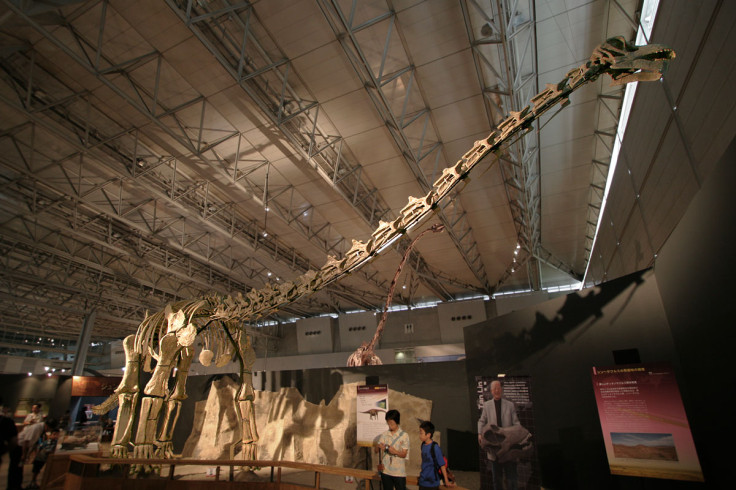Scientists Identify Largest Species of Dinosaurs in China

Scientists in China have identified the largest species of dinosaurs that possibly ever walked on earth.
The giant plant-eating dinosaur, Yongjinglong datangi, was discovered in China's Gansu Province in 2008, but has now been defined as a separate species living in the early Cretaceous period, about 100 million years ago.
Some remains of the species were found, which included three teeth, eight vertebrae, left shoulder blade and the radius and ulna from the right leg. These were enough for researchers to conclude that the gigantic reptile belonged to the family of sauropod Titanosaurs.
The dinosaur was a juvenile and about 60 feet in length, suggesting that adults were even more massive, making them the largest species ever to inhabit earth.
The research, published in Plos, was led by a doctoral student, Liguo Li, and Dr Peter Dodson, who have affiliations with both the China University of Geosciences and the University of Pennsylvania.
The remains of the animal resembled another Titanosaur named Euhelopus zdanskyi, discovered in China in 1929, but a number of significant characteristics make it a different and unique species.
The reptile had a long neck and an unusually long shoulder blade which would not fit in a body, unless oriented at an angle of 50 degrees from the horizontal.
"The shoulder blade was very long, nearly 2 metres, with sides that were nearly parallel, unlike many other Titanosaurs whose scapulae bow outward," Li told the Heritage Daily.
Also, an unfused portion of the shoulder blade led scientists to assert that the dinosaur was indeed a juvenile.
"The scapula and coracoid aren't fused here," Li said, adding: "It is open, leaving potential for growth."
Various anatomical features supported the bulky animal to bear its heavy weight on land. For instance, its vertebrae had large cavities in the interior that probably served as air sacs in the body.
"These spaces are unusually large in this species," Dodson said. "It's believed that dinosaurs, like birds, had air sacs in their trunk, abdominal cavity and neck as a way of lightening the body."
The teeth of Yongjinglong datangi were also quite different from Euheopus discovered earlier in China. While one of the longest teeth was 15 cm long, a shorter tooth had two bony ridges on the internal side. The feature clearly separates the species from Euheopus, which had only one bony ridge on its teeth.
Earlier, scientists had thought that herbivorous dinosaurs became extinct after the Jurassic period. But new finds in China suggest that dinosaurs possibly existed in Cretaceous, after Jurassic, as well, in some parts of the world.
"Based on US fossils, it was once thought that sauropods dominated herbivorous dinosaur fauna during the Jurassic but became almost extinct during the Cretaceous," Dodson said.
"We now realise that, in other parts of the world, particularly in South America and Asia, sauropod dinosaurs continued to flourish in the Cretaceous, so the thought that they were minor components is no longer a tenable view."
© Copyright IBTimes 2025. All rights reserved.





















